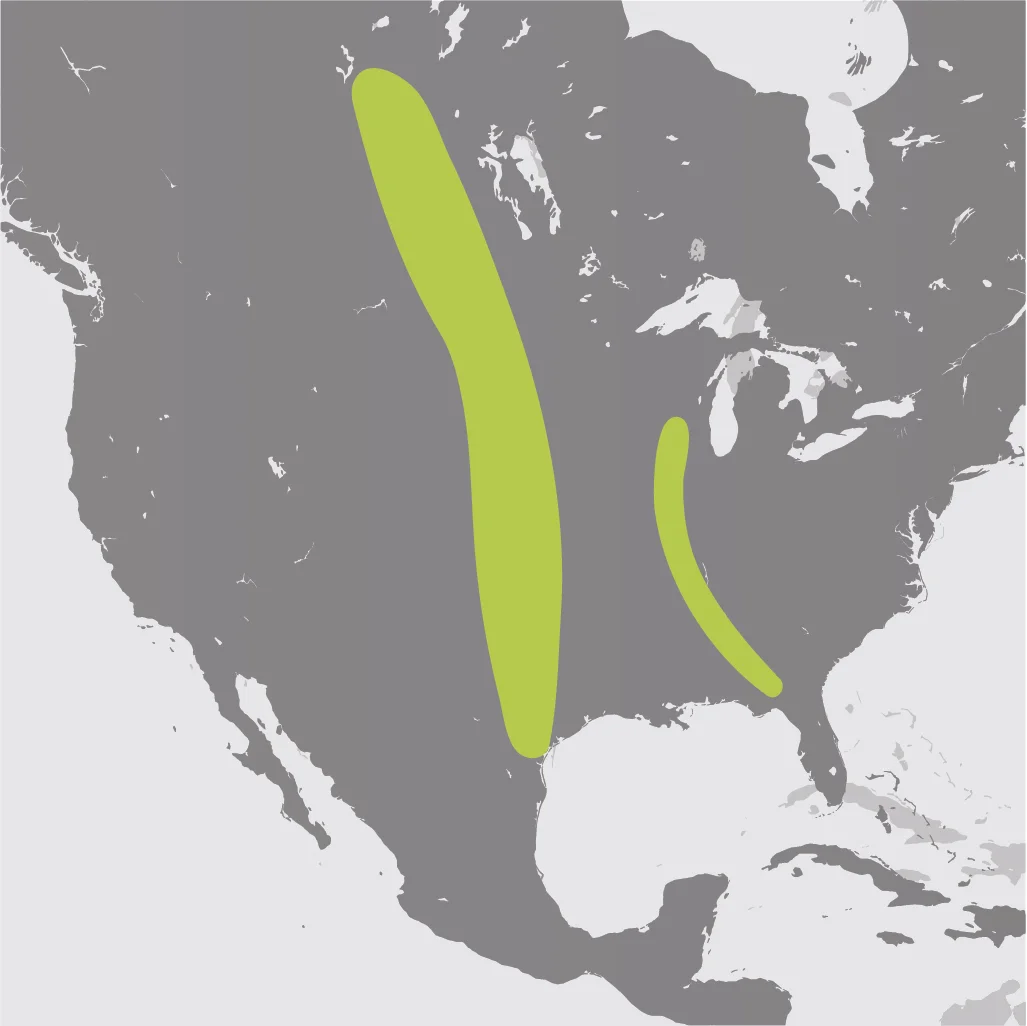Whooping Crane
"Early Morning Hunt" by Kristy Tipton (acrylic)
“I chose the whooping crane as a subject because, whenever possible, I like to observe animals in the their natural habitat before I paint them. I knew that the whooping crane migrated from northern Canada to south Texas during the winter months and congregated along the coastline at the Aransas National Wildlife Refuge near Rockport. Since I live in Texas, love the beach and enjoy a good road trip, it made for a perfect weekend.”
Your purchase is helping Expedition Art and SavingSpecies purchase land in Sumatra! Learn more about the project.
Habitat
The Whooping Crane can be found in shallow grassy wetlands, interspersed with grasslands or scattered evergreens throughout North America. Today, there are two migratory populations and one non-migratory population of whooping cranes. The largest flock is also the only natural flock that spends winters in Aransas National Wildlife Refuge in Texas and breeds in Wood Buffalo National Park in Canada. The non-natural migratory flock winters at the Chassahowitzka National Wildlife Refuge in Florida and breeds in the Necedah National Wildlife Refuge in Wisconsin. The non-migratory flock also lives year-round in Kissimmee, Florida as part of the reintroduction program.
Family Life
Whooping cranes form pairs at the ages of two or three and mate for life. New pairs often establish a territory near their parents. Whooping Cranes live and travel alone, in pairs, as families, or in small flocks of up to seven birds, and sometimes flock with Sandhill Cranes. Whooping cranes perform elaborate displays to attract mates. Both the males and the females jump up and down, bob their heads, flap their wings and call loudly.
Lifespan
The Whooping Crane can live for up to 22-24 years in the wild.
Hunting Habits/Diet
Whooping Cranes Whooping cranes are omnivores. They primarily eat crustaceans, small fish, insects, amphibians and reptiles. They’ll also eat grains, marsh plants and acorns. They peck and probe sandy or flooded soils to find their prey. They also glean insects, berries, and seeds from low vegetation and take prey from the soil surface, using their bills to stab larger animals. These animals also prefer to hunt in pairs rather than flying solo.
Population
There are about 600 Whooping Cranes left.
Fun Fact
While flying, the Whooping Crane can reach speeds of 45 mph.
At five feet tall, the whooping crane is the tallest bird in North America.
They are named for their whooping unison calls.
Why are they endangered?
Factors threatening them include powerline collisions, severe weather on the Gulf Coast, contaminant spills from barges, and occasional shooting by hunters intentionally or mistaking them for Sandhill Cranes.
Status
Endangered
Sources
(c)2017 Kristy Tipton


